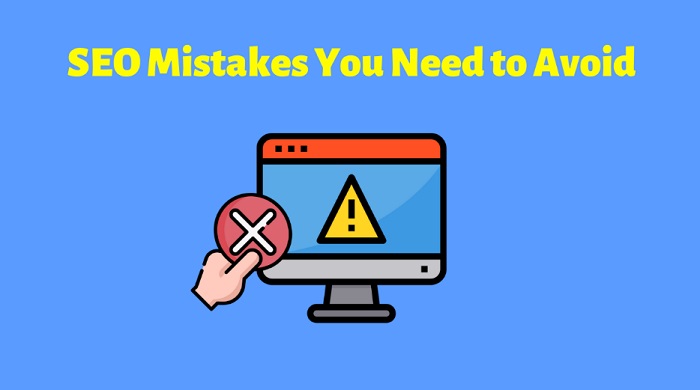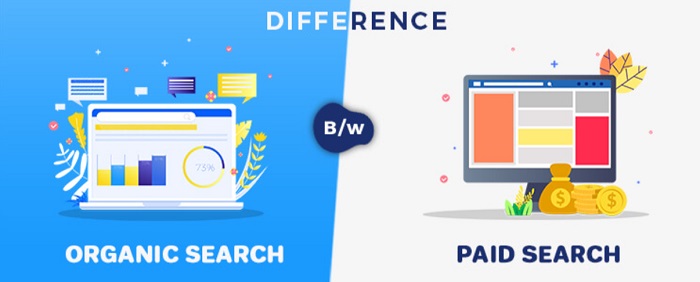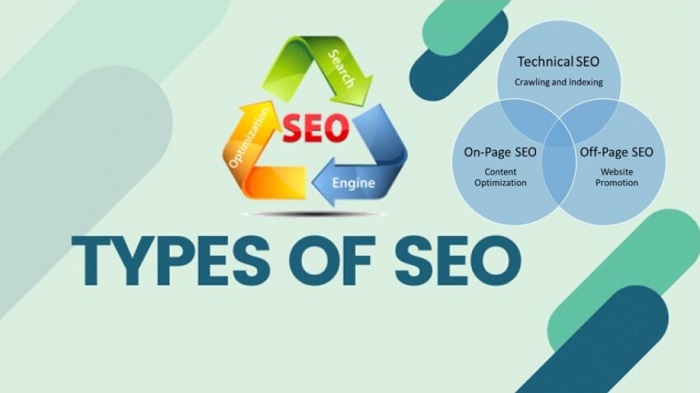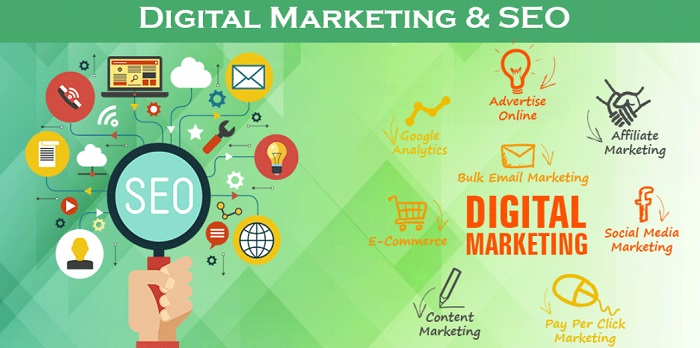It can be dangerous to use internet marketing. There are numerous deadly sins of Search Engine Optimization that can hamper the SEO of your website. There isn’t a set textbook on proper tactics or strategy. Business owners must determine what works and what doesn’t, together with any marketing and search engine optimization (SEO) experts they may engage.
Though some mistakes should have been avoided, not all errors are catastrophic. If you’ve ever wondered about SEO, it’s because certain websites are fortunate enough to rank on the first page. A website might use SEO or “search engine optimization” (SERP) to increase rankings on search engine results pages. We will discuss a few things in this essay that we should avoid.
See Also: 9 Best Books For SEO (Learn And Master)
What does SEO (Search Engine Optimization) mean?
SEO stands for search engine optimization. SEO improves your website to make it more noticeable when someone searches for the products you sell on Google, Microsoft Bing, and other search engines.
You offer services and information on subjects you have extensive experience or competence in.
Your chances of being seen and clicked on the increase with increased page visibility in search results. Ultimately, search engine optimization aims to draw website visitors who will convert to clients, customers, or a loyal audience.
What makes SEO so essential?
It would be a mistake to undervalue the value of SEO. To steer online traffic to one website or another, search engines use specific algorithms and Metrics.
Having a successful organic search strategy has several advantages. Also, you are learning important details about your audience from a business standpoint. A few examples of why SEO is significant are as follows:
- It’s inexpensive.
- It generates excellent returns on investment, offers relevant data, and nurtures prospects via the marketing funnel.
- It enhances credibility.
- It draws targeted users.
What is the difference Between Paid And Organic Search Results?
The “advertising” mark indicates which results are paid for and which are organic for users:
The SERPs prioritize paid results, with organic search results closely behind them. Therefore, for other users, different SERPs might show up.
At certain stages of the purchasing process, paid and organic advertising may occasionally target distinct demographics. Paid ads are likelier to click, mainly by those who want to buy something. At the same time, organic consumers are nurtured from the beginning of the funnel until they complete a purchase (or whatever the end of your funnel may be).
When you optimize your website, you provide the finest information to search engines so they can index and display your websites and pages on the SERPs. Always pay attention to the value of SEO when developing content; it needs appropriate optimization.
Kinds of SEO
SEO comes in three different categories::
- Technical SEO is the process of improving a website’s technical elements.
- On-site SEO involves improving website content for visitors and search engines.
- Off-site SEO: Producing brand assets (such as logos, names, slogans, catchphrases, and colors) and taking actions that will ultimately increase brand recognition and awareness (by showcasing and escalating its knowledge, authority, and dependability) as well as demand generation.
Content and technical optimizations are entirely in your complete control. Off-site activities are still a vital component of this SEO trinity of success, even though that is only sometimes the case (you can’t control links from other websites or if platforms you depend on shut down or undergo significant changes).
Digital marketing and natural search
It would help if you never forgot that your material has a purpose. Ranking well on a search engine’s first page is a terrific strategy to sell your products or services if you consider the search engine the marketplace for that service.
Organic search marketing may take some time to produce results, and SEO is a process that changes as your website does, so you must keep up with it to continue to reap the rewards.
The effort is worthwhile, though. All you need to do to generate this income is to make sure that you nurture your traffic via the marketing funnel. And to do that, you must develop your SEO methods and put them to practice.
8 Deadly Sins of Search Engine Optimization (SEO)
Search engine webmasters are constantly updating the SEO best practices to improve user experience. These guidelines help to keep searches legitimate, safe, and pertinent. Punishments for breaching the law can ruin a company. As an alternative, excellent SEO techniques might aid in raising KPIs and conversions. How then can you be certain that you’ve placated the Google gods? We have highlighted seven deadly sins to avoid in SEO to make the process simpler.
Here are a few deadly sins of Search Engine Optimization that we have discussed. To get complete knowledge about those deadly sins, continue to read the article.
First Sin: Utilizing the incorrect keywords
Your content won’t ever appear in those searches or be noticed by the proper people if your website doesn’t use the same keywords that folks searching for you do.
The answer? You can use the free Google AdWords Keyword Tool and Google Insights for Search to compare prospective keywords and determine the search volume for those terms. You should utilize more widely used terms in your titles and headings based on your study.
For example, if you’re a real estate agent, your research might show that 60% of people use the search word “real estate” to locate you online, whereas only 5% use the phrase “houses for sale.”
See Also: What Are Transition Words For SEO? | A Complete List
Second Sin: Not having a plan for your website’s content
Prior to Google’s Panda algorithm update last year, it was typical to see tiny, one-page microsites take over the search engine results pages (SERPs) based on the strength of their inbound link profiles or the links pointing to these microsites from other websites, rather than the quality of their onsite content.
One of the significant improvements brought about by the Panda update was the promotion of websites with lots of solid, high-quality content in Google’s search results. If your website lacks quality content, ranking for any competitive term is all but impossible. High-quality material is distinguished from low-quality content by Google using
- Inbound links to the page, both in terms of quantity and quality
- Social signals linking to the page in terms of both quantity and quality
- The page’s grammar and spelling
- The page’s text formatting queues up (bold, italics, bullet points)
- Utilizing subheads
- Size of the content
See Also: 8 Best SEO Audit Tools To Use in 2024
Third Sin: Delay starting. Utilizing SEO
The most significant source of online traffic is typically organic search, which is a search that results from relevant term matching. Making your website simple to locate online can boost your business from the moment it is created. Without visitors, websites don’t make many sales.
SEO should be taken into account at every stage of a website’s life since 95% of user attention goes to the first page of Google results.
Fourth Sin: Preventing search engines from accessing your website
It’s possible that you don’t want all of your website’s pages to show up in search results. Including a robots.txt file on your website or adding a robot’s meta tag to your pages are two standard ways to keep pages “hidden.”
But occasionally, these techniques unintentionally prevent your entire site from getting indexed, which is bad news.
Fifth Sin: Overuse of links
Google suggests keeping links on websites to a maximum of 100. This flexible limit does not imply that anyone with 102 links will be penalized. Instead, Google is attempting to establish a benchmark for how many links should be included while maintaining the content’s relevance and significance.
But remember that a web page with many links may appear shady to visitors or be difficult to read. This can cause visitors to leave the website quickly, which would lower the website’s search rating.
Remember that an external link on a page directs users away from the page’s original source.
See Also: How To Create Dofollow Backlinks? Easy Strategies In 2024
Sixth Sin: Making sharing difficult
You want to make it simple for people to share your material in the era of social media. A side benefit is that it aids in search engine optimization. However, too many websites, particularly with the popularity of rich media like AJAX and Flash, make sharing all but impossible. Make certain to:
- Your website’s pages each have a distinct URL. Is the website you want loading once you copy and paste the URL, or is the start of a wizard or filter loaded instead?
- In pop-ups without a URL, no content loads.
- Sharing links for videos opens an embedded version of the video rather than a separate pop-up window.
Seventh Sin: Inadequate financial support for the campaign
I frequently witness business owners fall for the low-cost SEO service companies’ promises of the globe while receiving meaningless assistance. For instance, after looking into the prior work of a shoestring SEO company, I once learned that it had filled the client’s website with several pages that were written in shoddy English, overstuffed with keywords, and offered no genuine benefit or service.
They were around 250 words long, which is typically insufficient to be considered thorough. Nobody would want these displayed on their website, was my initial assumption.
Eighth Sin: Publish the phrase “Stuffing.”
It follows consumer trends, is specific to your content, and drives traffic. Therefore, you’ve found the ideal term. I assume you should place it anywhere you can. Wrong!
While this black-hat strategy might be effective in the short run, ultimately, you’ll get found, which could lead to a hefty penalty or, in the worst scenario, a complete SERP removal. Google is especially severe on strategies like keyword stuffing since they sacrifice a better user experience to manipulate the algorithm.
See Also: Comparing Web Traffic Easily (5 Best Tools to Use)
FAQs
How does SEO Operate and What is it?
The method of ranking a website on search engines to make it more visible when users look for pertinent keywords and queries is known as search engine optimization. The amount of organic traffic a site receives will start to increase as its rating rises for a variety of keywords.
How does SEO Function?
Crawlers used by Google and other search engines collect data about the pages that are present on your website, which aids them in determining whether or not your website has the data an internet user is seeking for.
Search engines like Google and others are seeking for certain data, like:Content quantity and quality, Page speed, Meta Descriptions and heading tags, Facebook shares internal connections and backlinks even more
Which SEO Best Practices Exist?
The duties designed to raise a website's search engine rankings are referred to as SEO best practises and include:
- Optimization both on and off the page
- Keyword analysis.
- Setting up a backlinking plan.
Developing fresh content, etc.
What Else Constitutes a Google Ranking Factor?
Staying up to speed with these ranking variables is an essential component of any SEO plan because Google is renowned for making frequent modifications. Some of the major ranking elements that can raise your position are as follows:
- The speed at which your website's pages load.
- Having a mobile-friendly website
- Pages with internal links to relevant website information.
- Using pertinent keywords.
- On all of your pages, use title tags, headers, and meta descriptions.
- A URL with good structure Including material on your websites, such as pictures and movies.
- Links to evergreen content
Conclusion:
We might infer from the foregoing explanation that there are affordable strategies to avoid committing the seven deadly sins of search engine optimization. You can effectively and efficiently disperse the workload if you think outside the box.












